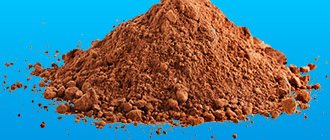Buckwheat and blood pressure
A natural product - buckwheat - helps normalize blood pressure, reducing the likelihood of strokes and heart attacks: thanks to its excellent chemical composition, it restores the functioning of the cardiovascular system.
In addition, buckwheat improves metabolism, cleanses of toxins, and helps in the fight against liver diseases. This is an important component in the human diet, as it has a positive effect on the body as a whole.
It is not subject to chemical treatment and is not genetically modified, which is important for health.
Beneficial properties of buckwheat
A healthy human diet should include buckwheat. It is useful for overweight people and diabetics due to the low amount of carbohydrates. It has a beneficial effect on the vascular system, stopping the formation of blood clots and reducing the fragility of blood vessels, compacting their walls, and improves blood circulation.
Streamlines the functioning of the liver and heart, removes toxins, excess sugar and cholesterol from the body, increases hemoglobin, and improves immunity. The acids in buckwheat promote digestion and absorption of food. In folk medicine, it is used to treat the gastrointestinal tract and pancreas, heartburn, and jaundice.
All these medicinal properties occur due to the rich composition of the product:
CompositionComponents in 100 g
| Squirrels | 10-13 gr. |
| Fats | 1.7 gr. |
| Carbohydrates | 70 gr. |
| Cellulose | 3-4 gr. |
| Starch | 60% |
| Vitamins | B1, B2, B3, B6, B9, E, PP, rutin |
| Minerals | Phosphorus, magnesium, calcium, potassium, iron, copper, zinc, iodine |
| Amino acids | Lysine, arginine, valine, methionine, threonine |
| Acids | Apple, sorrel, lemon |
In addition to the above-mentioned advantages, there are a number of important points:
- fiber normalizes intestinal function and prevents constipation;
- plant substances flavonoids prevent the development of cancer;
- calcium strengthens the skeletal system, prevents caries, brittle hair and nails;
- potassium lowers blood pressure;
- iron affects the formation of red blood cells;
- rutin promotes the absorption of vitamin C;
- magnesium improves mood and fights depression;
- folic acid (B9) affects the development of the fetus in the womb.
How does it affect blood pressure?
B vitamins strengthen the cardiovascular system.
The components contained in buckwheat help lower blood pressure in hypertensive patients. Vitamin B complex has a very beneficial effect on the heart, strengthens arteries and lowers cholesterol levels.
Magnesium, manganese, iron and phosphorus relax blood vessels and fill the blood with oxygen, proteins remove triglycerides from the body, counteracting the formation of blood clots. Folic acid improves the tone of the heart and blood vessels. In combination, these components help lower blood pressure and normal functioning of the entire cardiovascular system.
Buckwheat is a natural, chemical-free medicine in the fight against hypertension.
How is buckwheat used in the fight against high blood pressure?
Blood pressure can be lowered by regularly consuming buckwheat dishes. This cereal not only lowers it, but also maintains it at a certain level. Buckwheat porridge is also good for weight loss. And people with hypertension are often overweight. Therefore, they benefit from a buckwheat diet that lasts 2 weeks.
This diet allows you to consume 1-1.5 cups of cereal throughout the day. To prevent buckwheat from losing its beneficial properties, it needs to be poured with boiling water for a couple of hours until it is infused. Salt is excluded. Cereals contain a large amount of protein, so they are no worse than meat or fish. You are allowed to drink water, green tea, apples, and low-fat kefir. You need to have dinner 4 hours before bedtime.
As a result of such nutrition, a person loses weight and a decrease in blood pressure occurs by an average of 12 mm Hg. Art. This is facilitated by a reduction in the load on the heart and a decrease in salt in the body: the fluid does not stagnate and the muscles relax.
After finishing the diet, to maintain the results obtained, it is advisable to unload the body once a week and eat only buckwheat.
After 40 years, it is advisable to consume buckwheat 5-7 times a week, since the rutin contained in the product protects against cerebral hemorrhage.
Source: https://EtoDavlenie.ru/dav/pitanie/grechka-ot-davleniya.html
Effect on pressure
Buckwheat lowers blood pressure. This effect is determined by the content of B vitamins, manganese, iron, and phosphorus.
These substances help strengthen vascular walls, remove cholesterol, and replenish oxygen deficiency. In addition, the presence of folic acid increases the tone of the heart muscle, improves blood circulation, and protects blood vessels from fragility.
And the product’s ability to remove excess fluid from the body helps reduce internal pressure on blood vessels, which leads to normalization of blood pressure. Therefore, hypertensive patients are recommended to consume buckwheat daily.
Buckwheat increases or decreases blood pressure: recipe for buckwheat with kefir for hypertension
Cardiologist of the highest category Svetlana Vladislavova
36143
Update date: February 2020
A natural and dietary, healthy and nutritious product is buckwheat.
But every hypertensive or hypotensive person knows very well that some foods can lower or increase blood pressure, and from this perspective a logical question arises: does buckwheat increase blood pressure or lower it? It’s worth saying right away: due to the high content of magnesium in buckwheat, it helps to normalize and lower blood pressure without the use of chemicals.
Useful properties of buckwheat
Giving an answer to the question - does buckwheat increase blood pressure or lower it - doctors and nutritionists unanimously claim that this cereal helps normalize its level, lowering the tonometer readings. Hypertension and buckwheat porridge are two interrelated concepts in a therapeutic diet.
In addition to the fact that buckwheat lowers blood pressure and prevents the risk of stroke and heart attack, it also has other beneficial properties.
Buckwheat porridge is indicated not only for lowering blood pressure, but also for all overweight patients and diabetics. Due to its high carbohydrate content, it nourishes and gives a feeling of fullness, but is not stored in the body as fat deposits.
This cereal also has a positive effect on the cardiovascular system - it acts as an excellent preventative against the formation of blood clots and strengthens the walls of blood vessels, reducing their fragility and improving blood flow.
It also helps normalize the functioning of the liver and heart, removes toxins and sugar, bad cholesterol from the body, increases hemoglobin levels, strengthening the immune system.
In addition, it normalizes the functioning of the gastrointestinal tract and promotes normal digestion, which is why it is often prescribed for diseases of the stomach and esophagus, pancreas and jaundice, in case of frequent attacks of heartburn.
Buckwheat porridge contains a whole complex of vitamins and beneficial microelements
It is possible to reduce blood pressure with buckwheat porridge and improve the functioning of the whole body - all this is achieved due to the following composition of this cereal. So 100 grams of this product contains:
- Proteins – 10-13 grams.
- Fats – 1.7 grams.
- Carbohydrates – 70 grams, fiber – 3-4 grams.
- Vitamins B and E, PP and rutin.
- Phosphorus and calcium, potassium and magnesium, zinc and copper, iodine, iron.
Buckwheat also contains amino acids such as lysine and arginine, methionine, threonine and acids - malic, citric, and oxalic.
Among other things, the advantage of buckwheat is that it helps prevent constipation and the development of cancer, due to its high calcium content - it strengthens bones and hair. Iron - normalizes the process of hematopoiesis, potassium lowers blood pressure, magnesium - helps overcome depression.
Buckwheat and blood pressure
The components that make up buckwheat help normalize and lower blood pressure levels. In addition, B vitamins have a beneficial effect on the heart and help strengthen the walls of blood vessels and arteries, reducing and removing the level of bad cholesterol.
Also, magnesium and manganese, phosphorus and iron, which are part of buckwheat porridge, help relax the walls of blood vessels, saturate the blood with sufficient oxygen and naturally remove triglycerides, thereby acting as an excellent prevention of the formation of blood clots and blockage of blood vessels. Folic acid – improves the functioning of the cardiovascular system.
In their combination, all these components help to normalize and lower blood pressure, since buckwheat is a natural medicine that does not contain chemicals or GMOs.
Buckwheat contains a lot of protein, so it can partially replace meat
How to use for hypertension
You can normalize your blood pressure by regularly introducing buckwheat dishes into your diet. Buckwheat helps not only reduce, but also maintain blood pressure at a certain level. In addition, buckwheat helps normalize weight, and therefore nutritionists prescribe an appropriate diet for overweight people for 2 weeks.
It is recommended to consume 1-1.5 cups of cereal per day - it is steamed with boiling water overnight and taken in small portions the next day. The main thing in this case is not to add salt to the porridge. It is best to combine buckwheat with kefir for hypertension.
- The classic recipe is kefir with buckwheat for blood pressure and weight loss. It is enough to pour 3 tablespoons of peeled and washed cereal into a glass of kefir, leave this mixture in the refrigerator overnight and have such a healthy breakfast in the morning.
- A fragrant recipe - kefir with buckwheat for pressure relief with the addition of honey and cinnamon. For a glass of kefir and 3 tbsp. l. add 2 tsp cereals honey and cinnamon on the tip of a knife. Mix everything thoroughly, leave for several hours and take it, divided into 2 doses.
In this recipe it is worth making a certain reservation - the honey must be fresh and natural, and if there is an allergy to the beekeeping product itself, it is excluded from the recipe.
It is useful to drink more water and green tea, and have dinner no earlier than 3 hours before bedtime. If you follow an appropriate diet for at least 3-4 weeks, your blood pressure levels will normalize, decreasing by an average of 11-12 mm. rt. Art. This diet also helps reduce the load on the heart and remove salts from the body, fluid in the body does not stagnate, and muscle fibers relax.
At the end of the treatment course, it is important to do a fasting day on a buckwheat diet once a week, and upon reaching 40 years old, it is recommended to eat it 5-7 times a week, since it contains rutin, which is an excellent prevention of cerebral hemorrhage.
Source: https://gipertoniya.guru/dieta/kak-vliyaet-grechka-na-davlenie/
We germinate valuable cereals
An important condition: for germination, you need to take green buckwheat seeds, that is, cereals that have not been steamed. The grains should be poured into a strainer and rinsed well. Transfer to a wide glass container and level to form an even layer 1.5-2 cm thick.
Spring or purified (filtered) water is suitable for filling seeds. It should completely cover the grains. Leave the buckwheat in this form for 3-4 hours.
Carefully drain the water, rinse the grains again, return them to the container, and place a piece of damp gauze on top. Cover the bowl with buckwheat with a lid with holes for oxygen access. Now the seeds need to be placed in a dark place where it is not hot; at room temperature it will be just right.
Around the second day, small sprouts will appear. Let them gain healing power - another 12-15 hours - and after that you can eat.
Buckwheat diet and blood pressure
A natural and dietary, healthy and nutritious product is buckwheat.
But every hypertensive or hypotensive person knows very well that some foods can lower or increase blood pressure, and from this perspective a logical question arises: does buckwheat increase blood pressure or lower it? It’s worth saying right away: due to the high content of magnesium in buckwheat, it helps to normalize and lower blood pressure without the use of chemicals.
Chemical composition
The table shows only a small part of the useful components; in fact, there are many more.
VitaminsMacroelementsMicroelementsCarbohydratesFatty acids
| A | Potassium | Iron | Starch | Omega3 |
| B1 | Sodium | Fluorine | Glucose | Omega6 |
| AT 2 | Magnesium | Iodine | Maltose | Linoleic |
| B6 | Calcium | Zinc | Dextrins | Oleic |
| B9 | Sulfur | Manganese | Sucrose | Palmitic |
| E | Silicon | Selenium | Fructose | Meristina |
| RR | Phosphorus | Cobalt | Lactose | Linolenic |
What are the benefits of buckwheat porridge?
Due to the presence of essential amino acids in buckwheat porridge proteins, it can become an alternative to meat.
This product contains vitamins B, E, PP, coarse fiber and slow carbohydrates. Thanks to a set of useful microelements, buckwheat has a beneficial effect on the immune system, increases hemoglobin levels, and removes toxins from the body. Porridge is also good for digestion: it helps the absorption of nutrients and brings cholesterol levels back to normal.
- magnesium;
- potassium;
- iron;
- zinc;
- copper;
- phosphorus;
- calcium.
Buckwheat increases or decreases blood pressure: recipes with buckwheat for hypertension
Most grain crops have a lot of useful properties, but none of them has such variety as buckwheat. The ancient Slavs called it “heroic food”.
The name was not invented without reason, because buckwheat has high nutritional value and gives vitality.
To understand the benefits of buckwheat, whether it increases or decreases blood pressure, you need to understand its properties and composition.
Recipes with buckwheat for hypertension
Kefir with buckwheat reduces blood pressure in the body
Traditional medicine has many healing compounds, the most effective of them are presented below:
- Kefir with buckwheat for high blood pressure. To make healing porridge, you need to pour 1/3 of the container’s volume of buckwheat into a glass, pour in kefir and put in the refrigerator for 8-10 hours. For hypertensive patients, this is the best breakfast you can have. Porridge lowers blood pressure, but it must be consumed daily for two weeks;
- Buckwheat flour on kefir with apple. Buckwheat flour is no less useful. Sold in any diet food department. To prepare the medicine, you need to brew 3 tablespoons of flour with boiling water, and after the porridge has cooled, add 1 tablespoon of grated apple to it;
- Medicinal porridge with honey and cinnamon. Place 3 tablespoons of buckwheat in a container, add 1 dessert spoon of natural honey, a small pinch of cinnamon and pour warm low-fat kefir. The mixture is infused for 4-5 hours, and then taken in several doses. With stable high blood pressure, you can increase the daily intake to five tablespoons. Best taken in the morning, afternoon and evening.
Useful tips
To maximize the benefits, it is necessary to use and apply this or that product correctly. This also applies to buckwheat.
- There will be more benefits from fresh rather than fried. This can be determined by color. Fresh cereal will be lighter in color, perhaps with a greenish tint. It is this kind of buckwheat that contains the most useful substances;
- In order not to overload the body, the last intake of cereals for high blood pressure during the buckwheat diet should be 4 hours before bedtime.
Contraindications
Before using the buckwheat diet, read the contraindications:
- Gastrointestinal diseases;
- Severe diseases of the cardiovascular system;
- Diabetes;
- Metabolic disease.
Diets are not for everyone. Many people find it extremely difficult to switch from a regular diet to a more gentle one.
In fact, if you think about the benefits of this method, then it’s probably better to gain willpower and start therapy. Hypertension is a disease that is urgent and requires timely treatment.
If you have no contraindications to buckwheat, then you should think about using a therapeutic diet and start a health course.
Source: https://gipertonia.guru/narodnye-metody/grechka-povyshaet-davlenie-ili-ponizhaet/
Methods of use for hypertension
For buckwheat to help normalize blood pressure, one-time consumption will not be enough. Doctors advise eating cereal in courses lasting 2 weeks. You need to eat at least 20 tablespoons per day in several doses. The most favorable time for eating porridge is lunch and evening.
At the same time, you cannot cook the cereal. So it will lose its beneficial properties. Buckwheat should be poured with boiling water, left for 2-3 hours, and then just eaten. To improve the taste of the porridge, you can add an apple, natural yogurt, and dried fruits. But salt cannot be used during cooking (it retains water), which will lead to a decrease in the effectiveness of the diet.
There are several recipes for preparing buckwheat porridge, which will help stabilize blood pressure levels:
- With kefir. Take a container, fill it a third with cereal, and then fill it to the top with kefir. The mixture is placed in the refrigerator for 8-10 hours. They eat this porridge in the morning for breakfast.
- With kefir, apples. This recipe requires not whole grains, but buckwheat flour. You can make it yourself by grinding buckwheat using a coffee grinder, or purchase it in a store. To prepare medicinal porridge, you need to pour 3 tablespoons of flour with boiling water so that the mixture acquires a porridge-like consistency. When it cools, add 1 tablespoon of grated apple. Use 1-2 times/day.
- With honey, cinnamon. 3 tablespoons of cereal are mixed with 1 dessert spoon of honey and a pinch of cinnamon. The resulting composition is poured with warm kefir (1:2) and left for 4-5 hours. Use in several doses.
Buckwheat increases blood pressure
Giving an answer to the question - does buckwheat increase blood pressure or lower it - doctors and nutritionists unanimously claim that this cereal helps normalize its level, lowering the tonometer readings. Hypertension and buckwheat porridge are two interrelated concepts in a therapeutic diet.
In addition to the fact that buckwheat lowers blood pressure and prevents the risk of stroke and heart attack, it also has other beneficial properties.
Buckwheat porridge is indicated not only for lowering blood pressure, but also for all overweight patients and diabetics. Due to its high carbohydrate content, it nourishes and gives a feeling of fullness, but is not stored in the body as fat deposits.
This cereal also has a positive effect on the cardiovascular system - it acts as an excellent preventative against the formation of blood clots and strengthens the walls of blood vessels, reducing their fragility and improving blood flow. It also helps normalize the functioning of the liver and heart, removes toxins and sugar, bad cholesterol from the body, increases hemoglobin levels, strengthening the immune system.
Buckwheat porridge contains a whole complex of vitamins and beneficial microelements
It is possible to reduce blood pressure with buckwheat porridge and improve the functioning of the whole body - all this is achieved due to the following composition of this cereal. So 100 grams of this product contains:
- Proteins – 10-13 grams.
- Fats – 1.7 grams.
- Carbohydrates – 70 grams, fiber – 3-4 grams.
- Vitamins B and E, PP and rutin.
- Phosphorus and calcium, potassium and magnesium, zinc and copper, iodine, iron.
Buckwheat also contains amino acids such as lysine and arginine, methionine, threonine and acids - malic, citric, and oxalic.
Among other things, the advantage of buckwheat is that it helps prevent constipation and the development of cancer, due to its high calcium content - it strengthens bones and hair. Iron - normalizes the process of hematopoiesis, potassium lowers blood pressure, magnesium - helps overcome depression.
Enter your pressure
Composition Components per 100 g
| Squirrels | 10-13 gr. |
| Fats | 1.7 gr. |
| Carbohydrates | 70 gr. |
| Cellulose | 3-4 gr. |
| Starch | 60% |
| Vitamins | B1, B2, B3, B6, B9, E, PP, rutin |
| Minerals | Phosphorus, magnesium, calcium, potassium, iron, copper, zinc, iodine |
| Amino acids | Lysine, arginine, valine, methionine, threonine |
| Acids | Apple, sorrel, lemon |
In addition to the above-mentioned advantages, there are a number of important points:
- fiber normalizes intestinal function and prevents constipation;
- plant substances flavonoids prevent the development of cancer;
- calcium strengthens the skeletal system, prevents caries, brittle hair and nails;
- potassium lowers blood pressure;
- iron affects the formation of red blood cells;
- rutin promotes the absorption of vitamin C;
- magnesium improves mood and fights depression;
- folic acid (B9) affects the development of the fetus in the womb.
The benefits of buckwheat sprouts
They contain a large amount of Omega-3, a fatty acid that restores blood circulation in blood vessels and prevents them from clogging with blood clots. With regular consumption of buckwheat sprouts, it is possible to reduce high blood pressure, although not to normal, but quite decently, to improve the quality of life.
Vitamins and microelements, which are also abundant in sprouted buckwheat, nourish the walls of blood vessels, maintain their elasticity, and prevent them from becoming littered. Excellent prevention of cerebrovascular diseases and excellent heart support.
You can store sprouted cereal for no longer than 48 hours. During this time, a new portion of sprouts will arrive. They can be consumed separately - raw. Also put in salads. Research by scientists has shown that sprouted buckwheat is best absorbed in combination with fermented milk. Add sprouts to kefir, yogurt, homemade matsoni and yogurt.
Take your medicine from nature itself and be healthy!
We germinate valuable cereals
An important condition: for germination, you need to take green buckwheat seeds, that is, cereals that have not been steamed. The grains should be poured into a strainer and rinsed well. Transfer to a wide glass container and level to form an even layer 1.5-2 cm thick.
Spring or purified (filtered) water is suitable for filling seeds. It should completely cover the grains. Leave the buckwheat in this form for 3-4 hours.
Carefully drain the water, rinse the grains again, return them to the container, and place a piece of damp gauze on top. Cover the bowl with buckwheat with a lid with holes for oxygen access. Now the seeds need to be placed in a dark place where it is not hot; at room temperature it will be just right.
Around the second day, small sprouts will appear. Let them gain healing power - another 12-15 hours - and after that you can eat.
What are the benefits of buckwheat porridge?
Due to the presence of essential amino acids in buckwheat porridge proteins, it can become an alternative to meat.
This product contains vitamins B, E, PP, coarse fiber and slow carbohydrates. Thanks to a set of useful microelements, buckwheat has a beneficial effect on the immune system, increases hemoglobin levels, and removes toxins from the body. Porridge is also good for digestion: it helps the absorption of nutrients and brings cholesterol levels back to normal.
- magnesium;
- potassium;
- iron;
- zinc;
- copper;
- phosphorus;
- calcium.
Effect on high blood pressure
Microelements that relax blood vessels help enrich the blood with oxygen.
Due to the high content of B vitamins in buckwheat porridge, it has a positive effect on the circulatory system, strengthens the walls of veins and arteries, and also reduces blood pressure.
Manganese, magnesium, phosphorus and iron relax blood vessels, which is why the blood is saturated with oxygen. Folic acid has a positive effect on heart tone.
Eating buckwheat not only lowers blood pressure, but also allows you to effectively lose weight, which is very important for diseases of the cardiovascular system. The buckwheat diet must be followed for two weeks. During the day you can eat from 1 to 1.5 glasses of cereal. To preserve beneficial microelements, it is recommended to pour boiling water over the product for a period of 2-4 hours, without adding salt.
Doctors also advise including apples, kefir and low-fat yogurt in the diet; the following drinks are allowed: water, green tea and unsweetened coffee.
Meals are calculated so that food is taken at least 4 hours before going to bed. If you want to eat later, it is better to drink yogurt or kefir.
If you follow all the conditions of the diet, you can lose up to 12 kg of weight in two weeks. This will significantly reduce the load on the cardiovascular system.
Source: https://znk-mos.ru/grechka-povyshaet-davlenie/
The benefits of buckwheat sprouts
They contain a large amount of Omega-3, a fatty acid that restores blood circulation in blood vessels and prevents them from clogging with blood clots. With regular consumption of buckwheat sprouts, it is possible to reduce high blood pressure, although not to normal, but quite decently, to improve the quality of life.
Vitamins and microelements, which are also abundant in sprouted buckwheat, nourish the walls of blood vessels, maintain their elasticity, and prevent them from becoming littered. Excellent prevention of cerebrovascular diseases and excellent heart support.
You can store sprouted cereal for no longer than 48 hours. During this time, a new portion of sprouts will arrive. They can be consumed separately - raw. Also put in salads. Research by scientists has shown that sprouted buckwheat is best absorbed in combination with fermented milk. Add sprouts to kefir, yogurt, homemade matsoni and yogurt.
Take your medicine from nature itself and be healthy!











